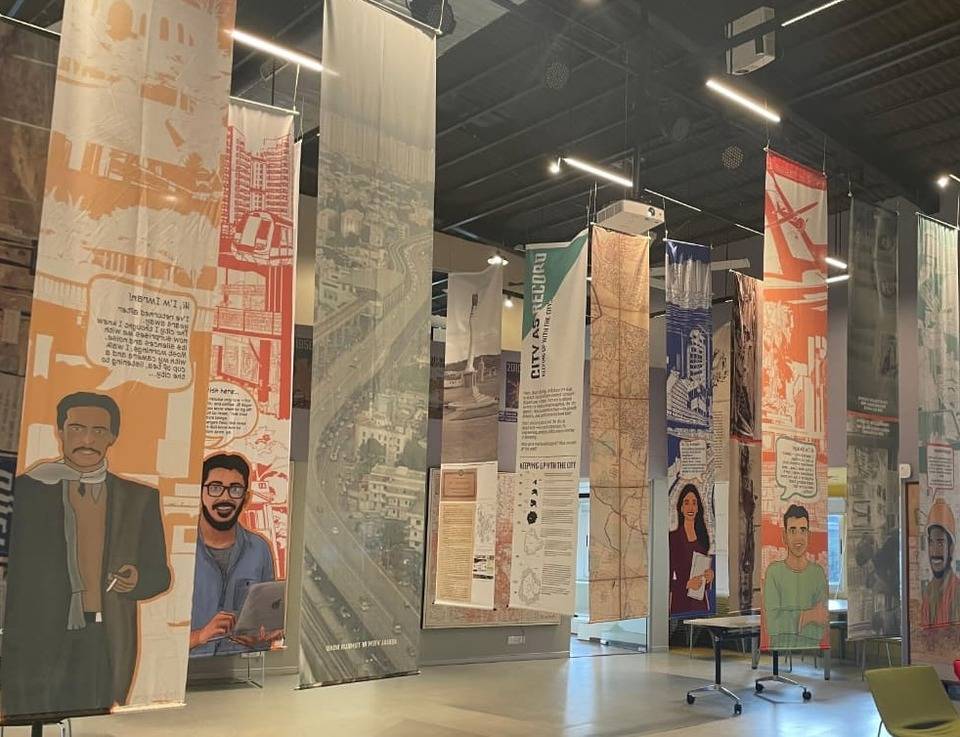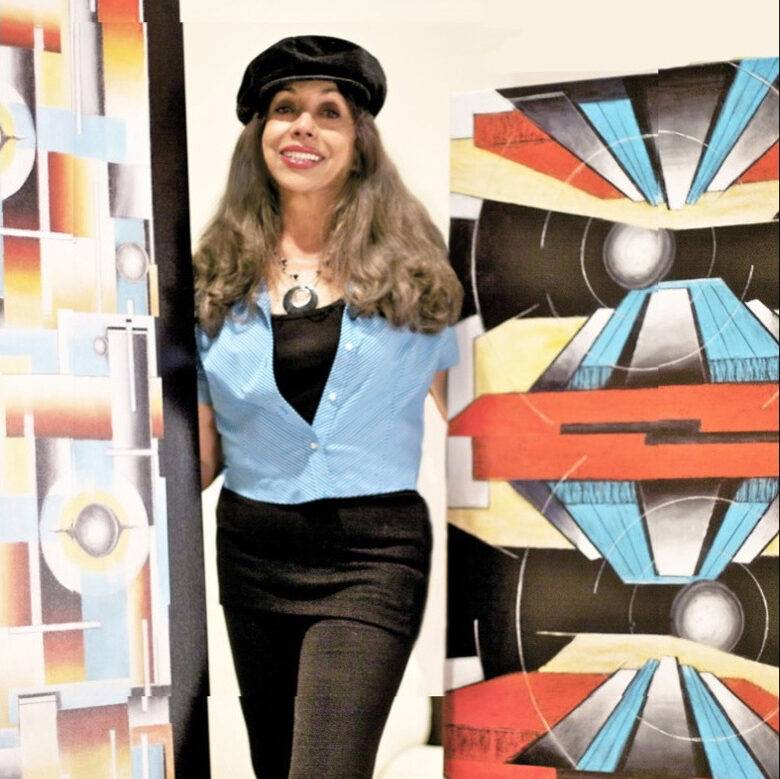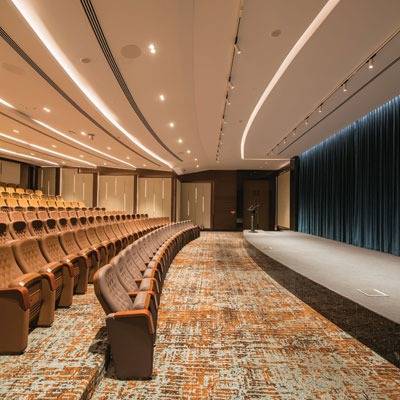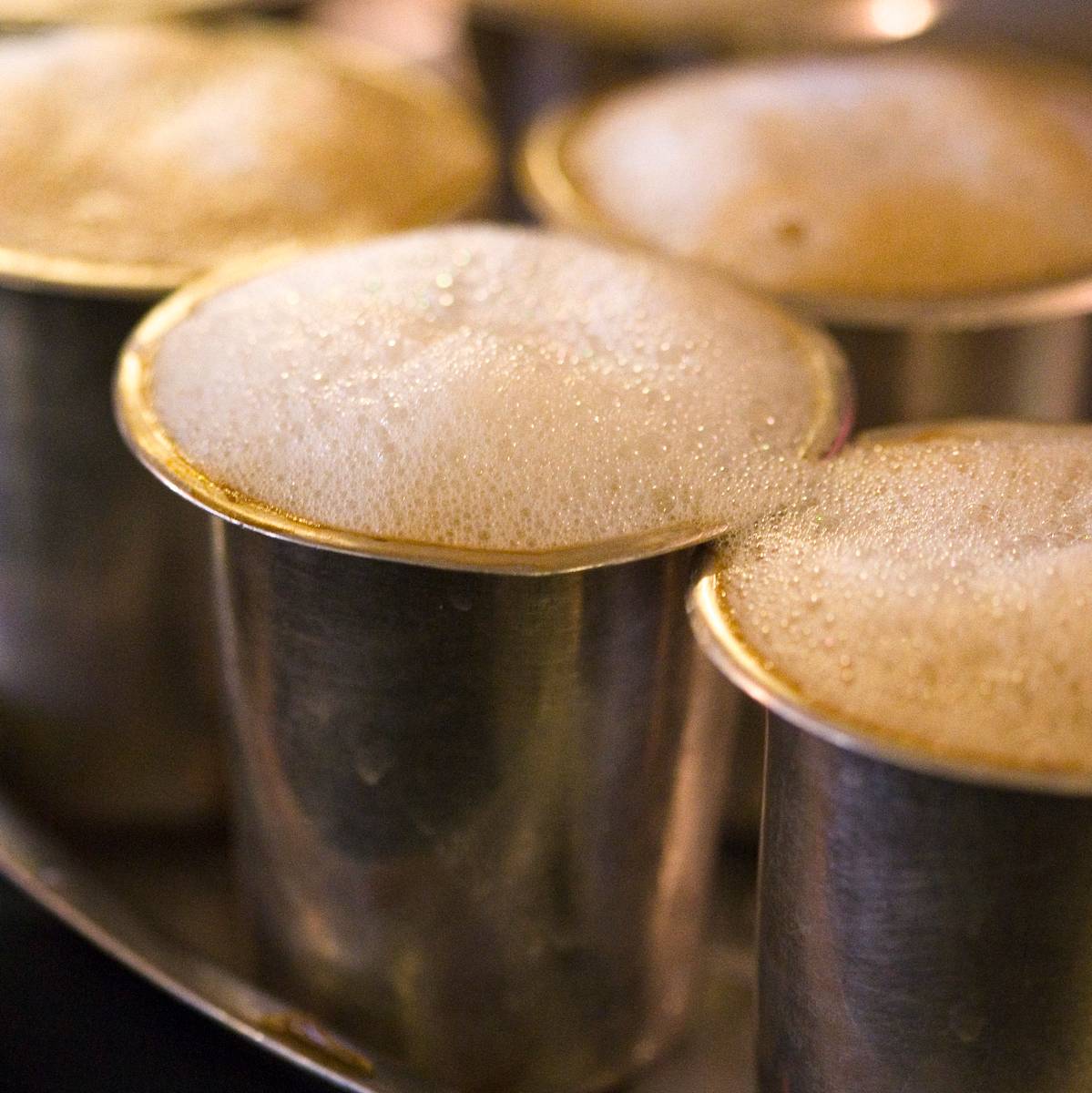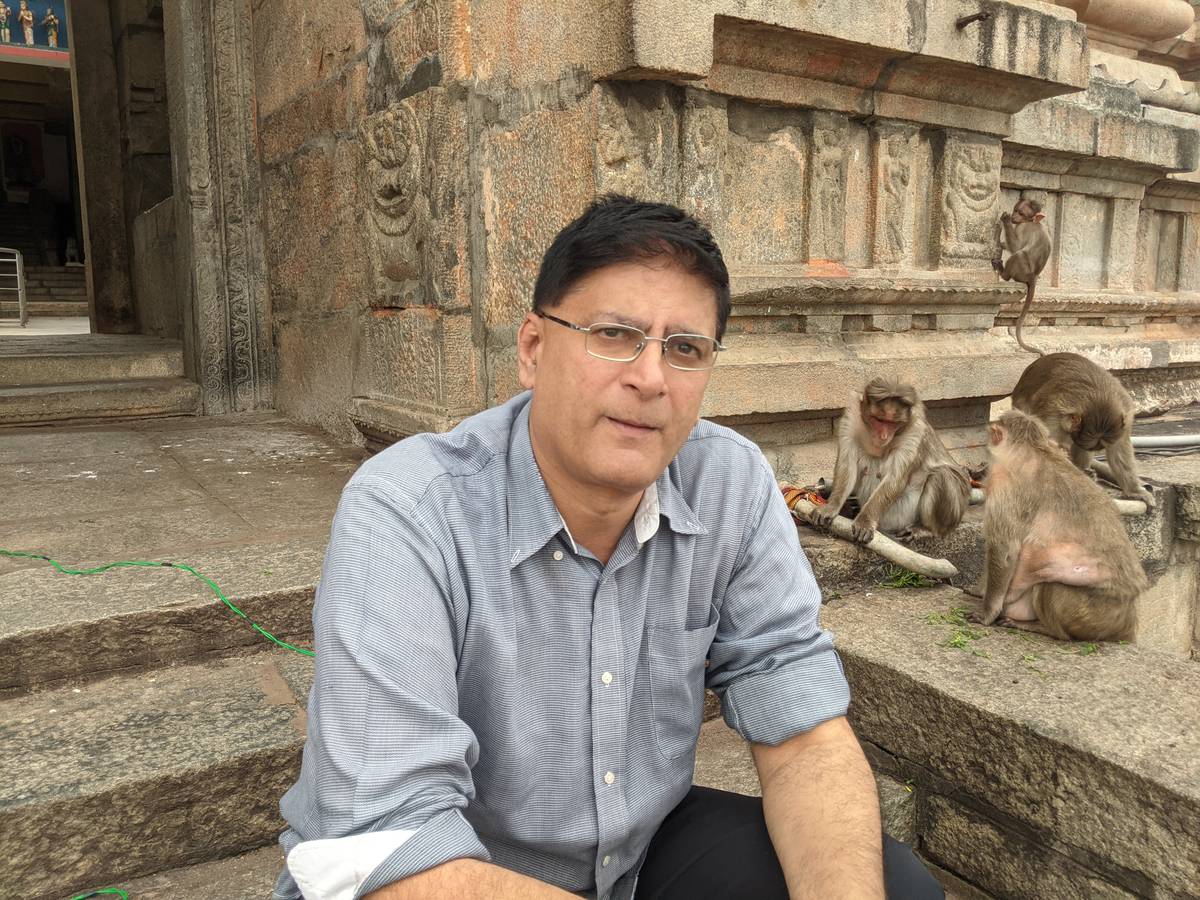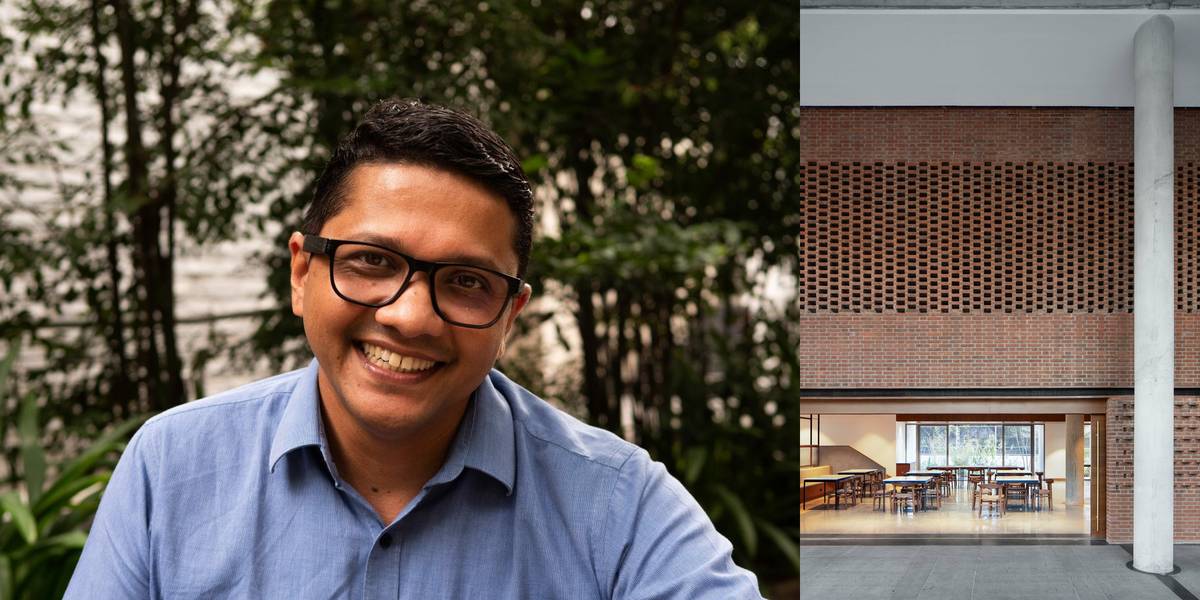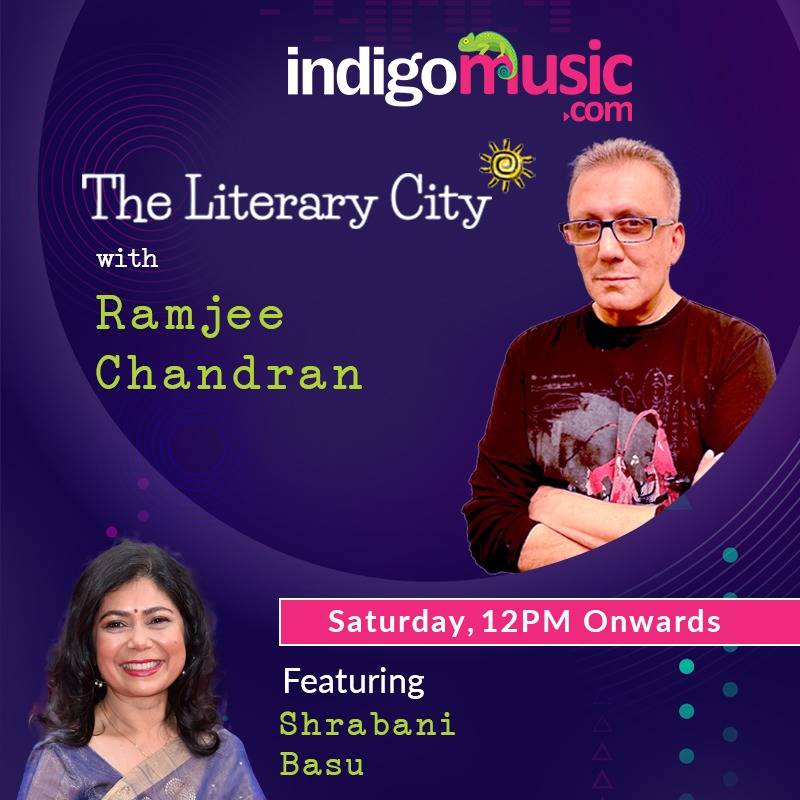The Vimor Textile Museum - Where Your Grandma’s Sarees Go to Live
Vimor is a museum of deeply personal heritage. As any Indian woman will attest, the relationship she has with a favoured saree is cherished.
Oct 11, 2025, 19 30 | Updated: Oct 15, 2025, 14 55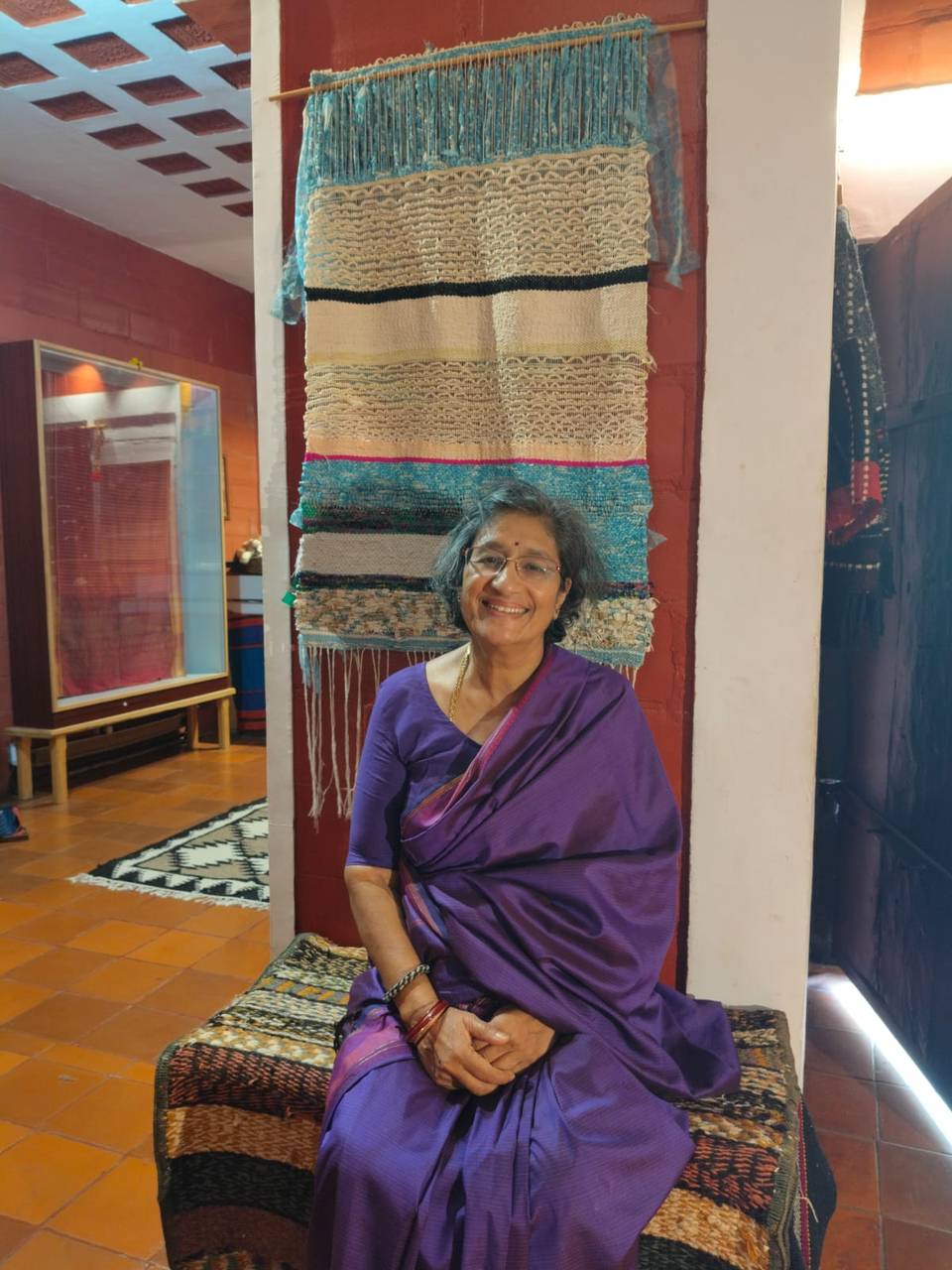
In Victoria Layout, down a lane called Anjaneya Street, is a lovely red bungalow. The board on the gate reads Vimor Museum of Living Textiles. This is where old sarees find a second life.
I asked Pavithra Muddaya, the founder of Vimor, to explain why this was a 'museum'. Her reply was as unusual as it was interesting: “I call it a museum because what you see on display here are sarees donated by people. Every saree on display here celebrates the person who wore it.”
In that sense, Vimor is a museum of deeply personal heritage.
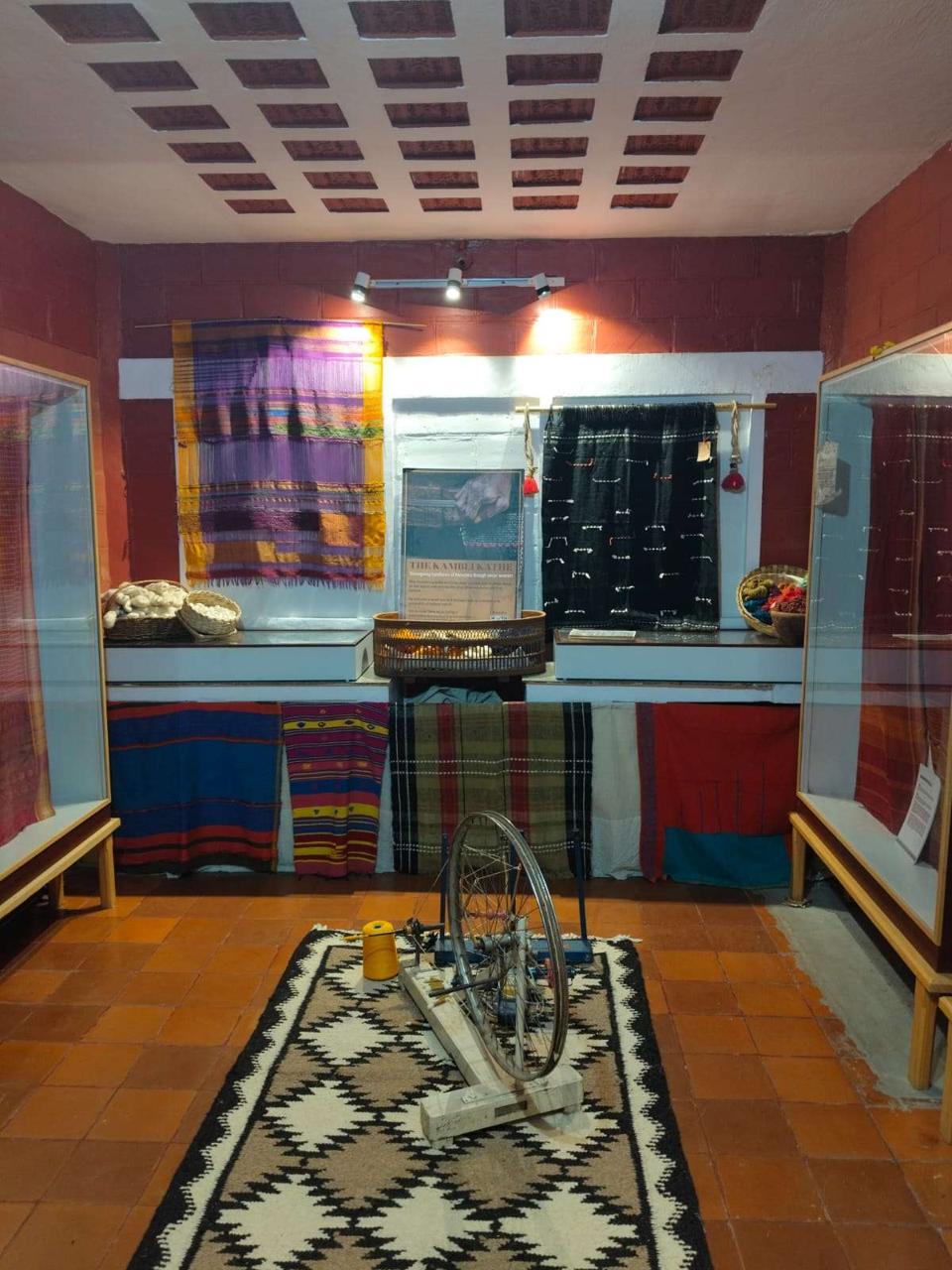
As any Indian woman will attest, the relationship she has with a favoured saree is cherished — no different, and one imagines, no less significant than any other family heirloom — only more intimate. And as more sarees collected in the hands of Pavithra Muddaya, a museum of this personal heritage started to happen.
Muddaya said she does not always know the provenance of the saree fabric, but that, she said, is the beauty of it. The sarees at Vimor could have belonged to your grandma — and mine.
The day I met Muddaya, she wore a saree that looked exactly like the one my grandmother wore. In fact, I have that saree framed and it hangs on my wall — it's a fond memory of my grandmother. In that moment in Vimor, when that saree invoked memories of my own, I began to viscerally understand the significance of a museum like Vimor.
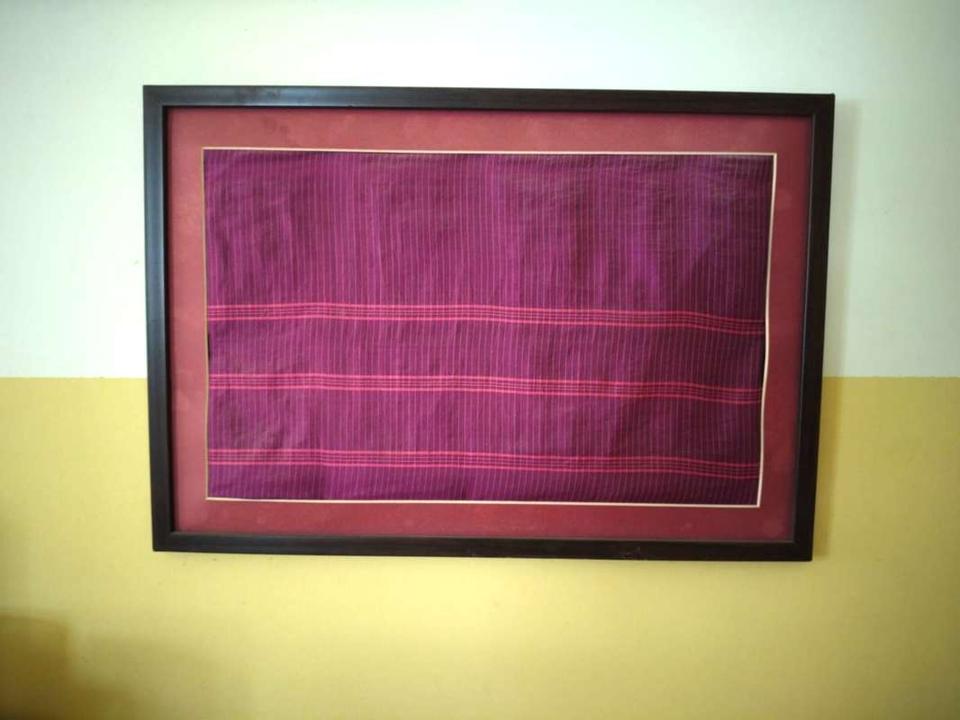
Vimor was started in 1974 by Muddaya and her mother, Chimy Nanjappa. Nanjappa had, in 1958, cut her teeth in the business as the first manager of the iconic Cauvery Arts Emporium on MG Road. She travelled across the world — to the World’s Fair in New York and Montreal, to name two important destinations — and, under the aegis of Pupul Jayakar, known as the “culture czarina of India,” handled the saree section and represented Indian textiles on a global stage.
The following year, the Indian bureaucracy — with its predilection for treating foreign trips as perks and bonuses (and not a necessary part of someone’s profession) — decided that Nanjappa had already “been abroad” and they sent someone else to the world fairs.
Nanjappa quit her secure government job. It was a bold move for the time. When her husband passed away, her daughter Pavithra returned from Chennai, where she was studying law. Together, they made Vimor happen. To Pavithra Muddaya, I guess, the loom was more attractive than the law.
Muddaya insists modestly that everything that happened after was pure luck. “One day, a gentleman named Mr. Bhandary came to our door with a bundle of temple sarees,” she recalled. Redesigning and mending those sarees became Vimor’s first project. It was also their entry into Delhi’s design circles — significant, as anyone in the business will understand.
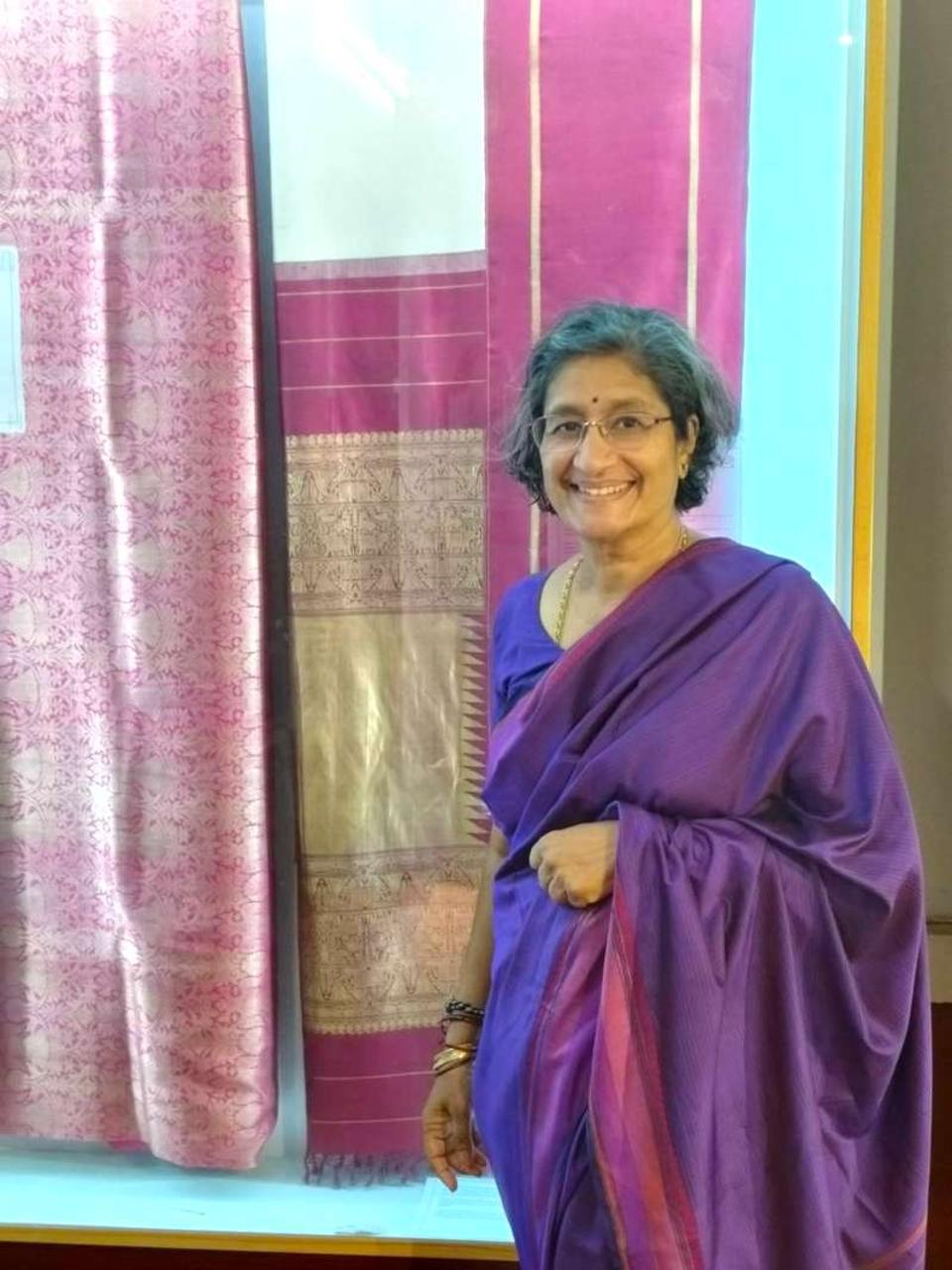
The business of saree weaving is an interesting one. This is, after all, a craft that has survived in India since 3000 BC. Every village in ancient India had a farmer and a weaver to feed and clothe its residents.
The 17th century saw many changes in weaving. The invention of the Jacquard loom and the British industrialisation of India saw the handloom industry decline, as power looms took over, effectively displacing the handloom weavers, obliging them to seek employment elsewhere.
One example is the huge migration of handloom workers from the Salem area of Tamil Nadu to New Delhi, where they became domestic servants. This shift — from a highly skilled traditional profession to low-skilled domestic service — is a common pattern in the history of mechanisation of traditional trades in India.
The employment of handloom weavers as domestic servants in Delhi represents a socio-economic reality observed on the ground — the logical endpoint of the three corroborated trends combined: an economically displaced artisan community (Salem weavers) migrating for survival to a large metro area (Delhi) and finding entry into the most readily available informal sector employment (domestic work).
The British imported Indian-made fabric — mass produced by power looms — and then exported finished garments to India. This became a focal point in nationalist politics when Gandhi famously got people to set fire to piles of British-made garments and exhorted people to buy swadeshi — particularly khadi, produced by handlooms. He promoted the spinning wheel as the nationalist symbol (to the degree that it is on the Indian flag).
While handlooms might suffer the same challenges as other rural or traditional businesses — one being that the next generations look to leave their family trades for a more urban existence — handlooms still survive.
To achieve growth, though, it needs scale. This can happen if there is a greater understanding of why it is important to support this industry. One way the increasingly wealthy urban middle class could turn to handlooms is if they became chic.
And this is something dear to fashion industry icon Prasad Bidapa. Here’s what he had to say in response to my view about the industry’s challenges:
“That's a sharp observation about the handloom industry's tightrope walk. You're right — the threat of younger generations opting for city life and different careers is universal for traditional crafts. And yet, handlooms are still around, which speaks to the intrinsic value and resilience of the craft. The question of scale for growth is the critical pivot. We can't just expect handlooms to thrive purely on nostalgia or charity. It has to make economic sense. And that's where the idea of making handlooms 'chic' comes in — and it's brilliant. It should remain small, become expensive, and desirable the way branded bags like Hermès appeal to buyers.
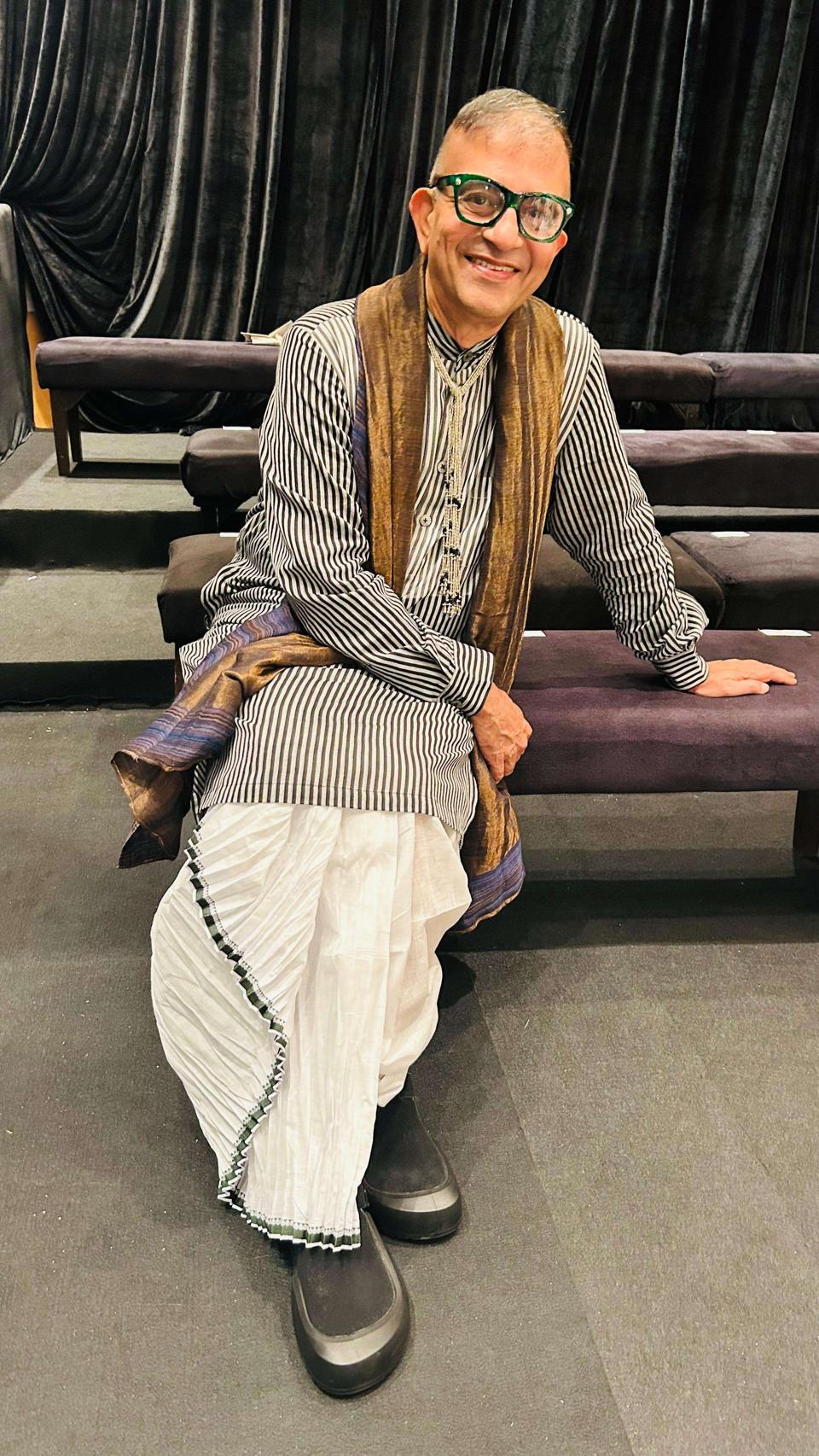
For the increasingly wealthy urban middle class, it can't be presented as something rustic or a dying art form that needs saving. It has to be positioned as aspirational, exclusive, and contemporary. When a handloom piece is viewed as a work of art or an investment in genuine heritage and quality, that's when the market will expand, and the industry will finally achieve the scale it needs to secure its future. It's about making handlooms the ultimate status symbol — a quiet rebellion against the synthetic and the disposable.”
For years though, Muddaya has indeed been involved in such change.
An example is that in the corporate milieu of the 1970s, sarees weren’t just attire — they were a statement of identity. But the clichéd heavy Kanjeevarams were not practical. So, in classrooms, offices, and boardrooms, light, wearable sarees, such as those designed by Vimor, became the uniform of quiet confidence.
And one of those offices belonged to one of the most fashionable of India’s prime ministers — Indira Gandhi.
“I have designed sarees for Indira Gandhi and Sonia Gandhi,” Muddaya said.
That line briefly took me down a dark path. I remember visiting the Indira Gandhi Memorial Museum in Delhi as a seven-year-old. Behind the glass hung the blood-soaked saree with bullet holes — the one she wore the day she was assassinated.
Little did I know that a saree shop in my own neighbourhood, Vimor, had once designed sarees for her.
Over the decades, Vimor has welcomed royalty, weavers, and regular folk. “We’ve never cared about anyone’s last name,” Muddaya told me. “We’re just honoured to be part of their story."
"For example, Priyanka is very happy that her grandma’s sarees live on thanks to us,” she added.
“Priyanka who?” I asked.
“Priyanka Gandhi,” Muddaya clarified.
Of course. Priyanka Gandhi’s grandmother was Indira Gandhi.
You can visit the Vimor Museum of Living Textiles, open Monday to Saturday, 10:30 a.m. to 5 p.m. Prior appointments are recommended. The entry fee is ₹300.
Find details on the Explocity Guide listing: https://bangalore.explocity.com/bangalore-guide/listing/vimor-museum-of-living-textiles/

